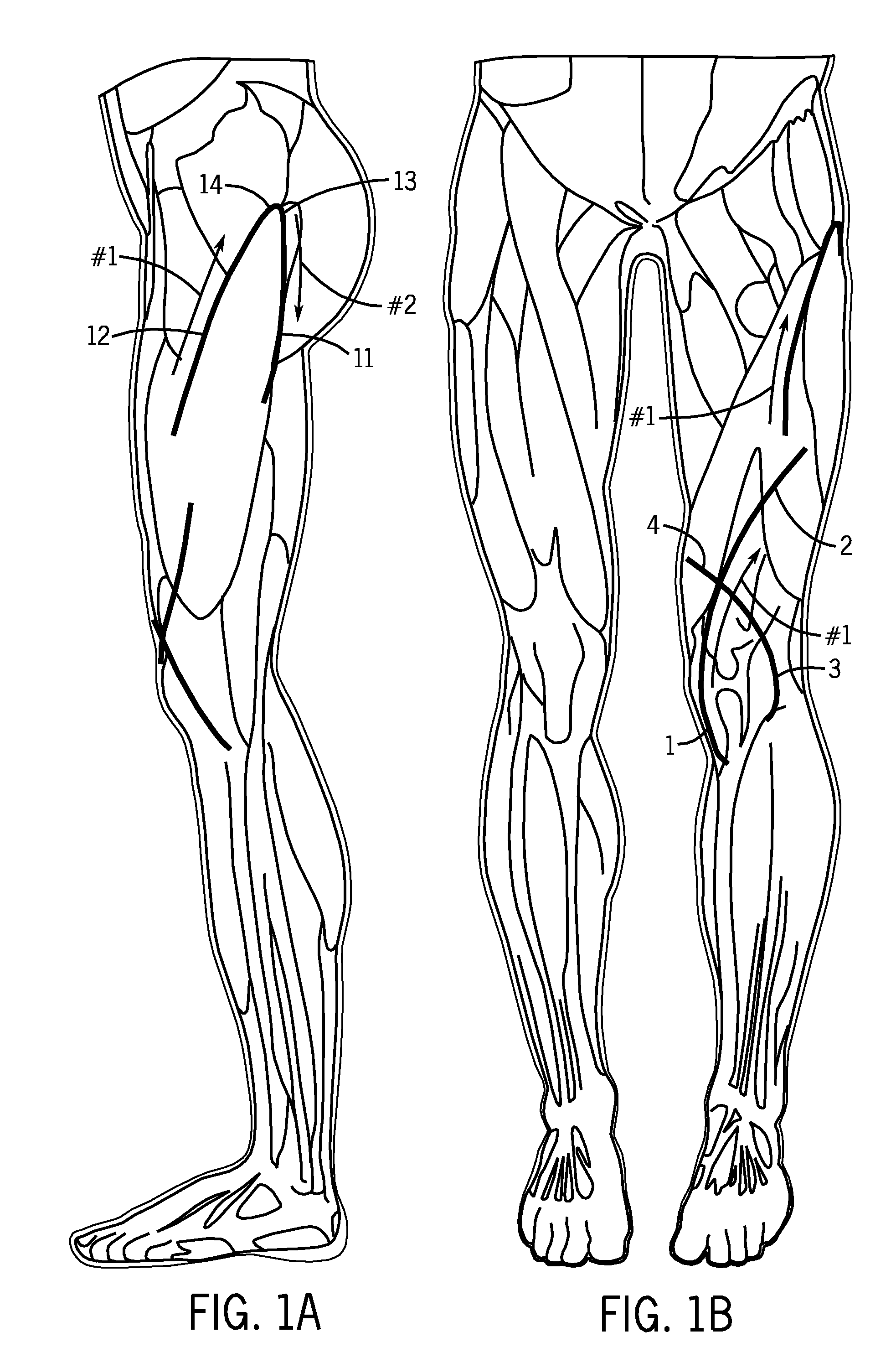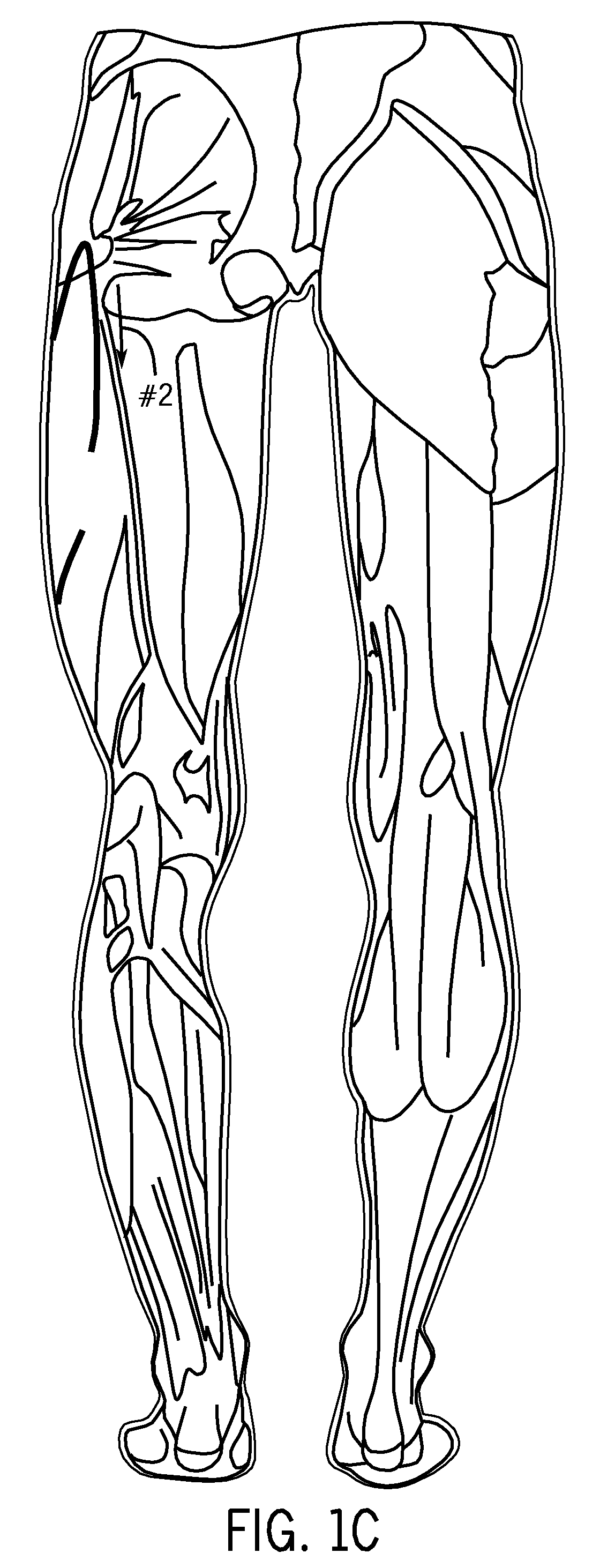Cutaneous proprioreceptive activation garment system
a proprioreceptive and garment technology, applied in contraceptive devices, medical science, therapeutic cooling, etc., can solve the problems of tissue injury, tissue injury, pain, etc., to improve posture, improve strength, and facilitate the range of motion or stabilization of the range of motion of the subj
- Summary
- Abstract
- Description
- Claims
- Application Information
AI Technical Summary
Benefits of technology
Problems solved by technology
Method used
Image
Examples
Embodiment Construction
[0055]The claimed activators have been tested by for effectiveness in pain management, range of motion, posture, inflammation reduction, improved circulation, changes in fluid movement and other anatomical changes. The protocol employed diagnostic ultrasound to test the efficacy of the claimed invention as ultrasound permits visualization of muscle and tendon texture, fluid accumulations, blood flow, and bone surfaces. Employing a consistent testing protocol using ultrasound we can identify whether the activators are making a difference within a subjects' anatomy. The following is a summary of the protocol used to test the claimed invention.
Pre Applicator Resting.
[0056]Prior to the testing appointment, subjects were asked not to exercise or perform any activity out of the ordinary. Subjects were then asked to report the level of pain that they were experiencing and the level of pain they experience daily using a scale of 1 to 10, with 10 being the worst. The subject's normal activit...
PUM
 Login to View More
Login to View More Abstract
Description
Claims
Application Information
 Login to View More
Login to View More - R&D
- Intellectual Property
- Life Sciences
- Materials
- Tech Scout
- Unparalleled Data Quality
- Higher Quality Content
- 60% Fewer Hallucinations
Browse by: Latest US Patents, China's latest patents, Technical Efficacy Thesaurus, Application Domain, Technology Topic, Popular Technical Reports.
© 2025 PatSnap. All rights reserved.Legal|Privacy policy|Modern Slavery Act Transparency Statement|Sitemap|About US| Contact US: help@patsnap.com



